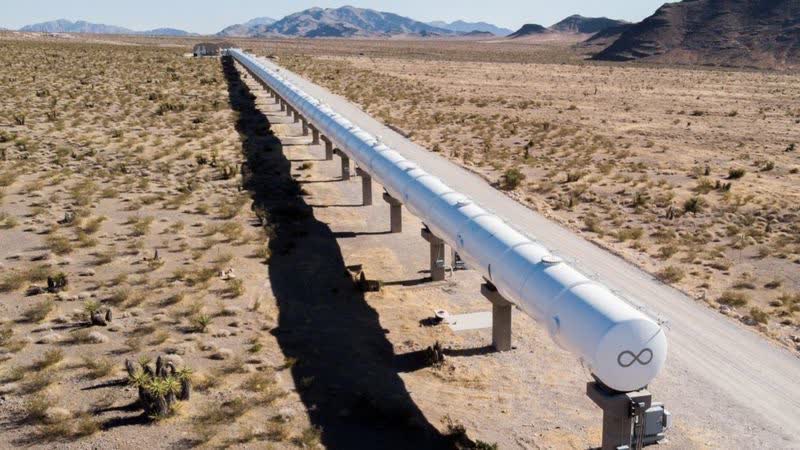Forward-looking: Virgin Hyperloop just sent two passengers down a 500m test track yesterday, reaching speeds of up to 107mph. These are still the early stages of this technology, and only preliminary tests have been performed, but the potential benefits seem exciting.
The super-fast transport system that transforms humans into 20th-century bank memos set up a 500m track in the Nevada desert yesterday to test its new technology.
The Virgin Hyperloop (VH) is a "futuristic" transport system that sends magnetically levitated pods along vacuum-tubes at extreme speeds. The system was proposed by Elon Musk back in 2013 and picked up by a Virgin Group subsidiary the following year for development.
The pod traveled the 500m test-track in 15 seconds at a top speed of 107mph. Two Virgin staff members, Sara Luchian and Josh Giegel, were inside the pod to give their review of the trial-run.
VH suggests its system can transport passengers from Los Angeles to San Francisco in a measly 43 minutes, which would require peak speeds of 670mph. This would be nearly double the current world record set by a mag-lev train speed test set in Japan in 2015.
In theory, according to Mr. Musk, tickets for this East Coast journey would cost as little as $20 USD and could be launched as often as 30 seconds apart. The track itself would cost roughly $6bn to build.
For reference, the hotly contested High Speed 2 rail set to be built in the UK and connect London to the North will cost just short of £106bn ($140bn USD). This system, built with modern technologies, should top out at 250mph.
The former Virgin Hyperloop One boss, Rob Lloyd, suggested the Hyperloop solution could be used anywhere around the globe. He quoted a theoretical, 4-minute travel time between Heathrow and Gatwick airports, for example.
While there would be substantial infrastructure to build, Sara Luchian, the Director of Customer Experience (and one of yesterday's two test riders) put forward, "We can keep building today's or yesterday's transport systems and keep encountering the same problems they bring or we can really look to build something that solves those problems."
VH's website also quotes environmental benefits of the new tech. The tubes would be built either underground or suspended on concrete stilts, minimizing interference with wildlife on the surface. The system is also slated to be run completely by solar panels lining the roof, and the nature of its design means it will be much quieter than modern rails.
This all sounds optimistic, though much of this information is coming from Virgin Hyperloop. We'll see if these quoted top-speeds, cost efficiency, and environmental benefits truly emerge in the near future.
